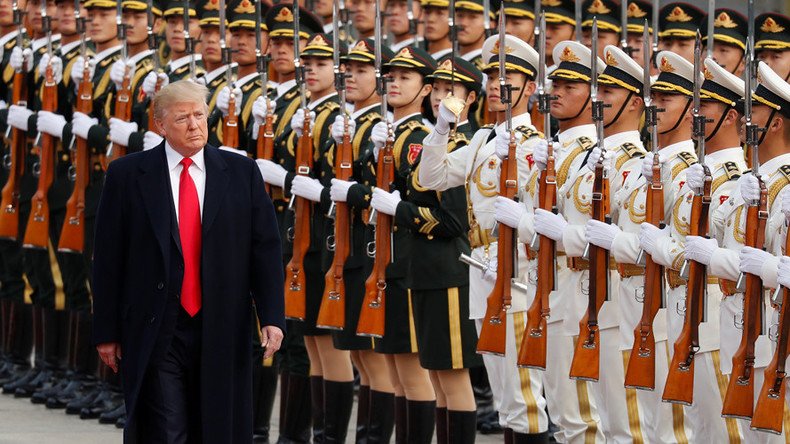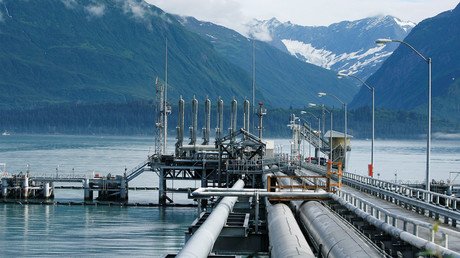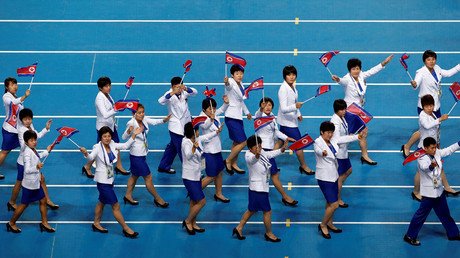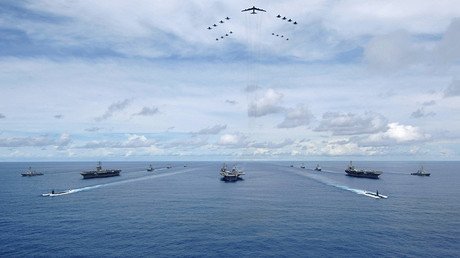Trump keeps it simple on Asian tour – trade and North Korea. But where is the strategy?

President Donald Trump likes to keep things simple. His strategy for his trip to Asia can be succinctly described as concentrating on ‘trade and North Korea.'
And don’t expect anything more complicated for the remaining three years (seven if he is re-elected) of his presidency. For having torn up the carefully constructed Asia strategy of predecessor Barack Obama and others he doesn’t appear to have a cogent plan for America’s relationship with the region.
Trump is on a 12 day, multi-country trip to Asia. He began his diplomatic tour in Japan with a meeting and a game of golf with Japanese Prime Minister Shinzo Abe, then moved onto South Korea and China where he was feted over two days in the sumptuous style the Chinese reserve for powerful foreign leaders.
Trump celebrated the first anniversary of his seismic victory over Democratic candidate Hillary Clinton while traversing Asia. And, in Vietnam, the Korean peninsula and Japan, in his bombastic rhetoric and lack of success in formulating cogent new trade strategies, we saw why Trump’s first year has been deemed a failure by many.
Yet he is here, which is a success in itself. He was viciously critical of China during last year’s presidential campaign. And he has continued American diplomatic efforts in a region where it was once, with varying degrees of justification, mired in conflict.
Despite efforts, American diplomacy has a less than consistent record in Asia since the day, 2 September 1945, that General Douglas MacArthur accepted the surrender of Japan after that country’s dastardly attack on Pearl Harbor brought the US into the war.
When World War II ended the US first saw Asia as a place where the advance of Communism had to be halted. It failed in the case of China and with deep tragedy and long-term political consequences in Vietnam. Trump’s predecessor, President Harry Truman, stopped the aforementioned Douglas MacArthur from taking the Korean conflict into China and setting off another global conflagration. But the current problems with North Korea have evolved directly from the 1950s.
Trump, who is an avowed admirer of the late MacArthur, is fixated on North Korea in a manner that, as with so many things with this unusual man, seems so uncalled for. And of all the fixations Trump holds dear, this is the most genuinely dangerous.
Yes, North Korea’s missile program has increased in intensity and visibility in the period since Trump became president. North Korea has fired at least two missiles threatening Japan, and it conducted its sixth nuclear test earlier this year.
But it is Trump’s fatal urge to indulge in unseemly public slanging matches with North Korean leader Kim Jong-un that worries the world so.
On Sunday, Trump, dressed in leather airman’s jacket, set the tone for his tour. At Yokota air base outside Tokyo and, in front of a large crowd of US servicemen, he launched into a jingoistic speech that carried thinly veiled references to Kim and his country.
“No one, no dictator, no regime … should underestimate American resolve,” Trump said. “You are the greatest threat to tyrants and dictators who seek to prey on the innocent,” he said, adding that authoritarian regimes could also take the route “towards prosperity and peace.”
This comes in the wake of references to North Korea, dripping with the menace of Hollywood action movie dialogue, like “fire and fury,” “locked and loaded” and “totally destroyed.” And he has cut a swathe through Asia with this stuff. Yet, as so often with Trump, he is far from complete consistency. On a couple of occasions, he has veered toward a statesmanlike act.
At a news conference in Seoul, South Korea with that country’s leader Moon Jae-in, Trump called the North to denuclearize. A more conciliatory Trump said it "makes sense for North Korea to come to the table," and to "do the right thing, not only for North Korea but for humanity all over the world."
And he "hoped to God," he would not have to attack North Korea. The two leaders also called on China and Russia to put pressure on Pyongyang.
If Trump stuck to this kind of message, as his predecessor Obama did, then we would not have a heightened sense of tension. Like so much of what Trump does the saber rattling toward North Korea seems to contribute little to forming a consistent strategy.
However, all this taunting of a rogue state, that really should be treated with wariness, may have a consequence that will benefit the US economically.
For as I said, Trump likes to keep it simple. A fundamental plank of his successful election campaign last year was a pledge to get rid of the trade deficits that exist between Japan, China, and other countries.
The US has a $69 billion trade deficit with Japan (meaning Japan makes $69 billion more out of import/export trade with the US). Trump told Japan it can defend itself against North Korea and make him happy by closing the trade deficit in one ingenious move. If Japan buys arms from the US, the threatened country could then zero in on the North Korean missiles and “shoot them out of the sky.”
“He (Japanese Prime Minister Shinzo Abe) will shoot them out of the sky when he completes the purchase of lots of additional military equipment from the United States,“ Trump said. “The prime minister is going to be purchasing massive amounts of military equipment, as he should. And we make the best military equipment by far.”
Abe said Tokyo would shoot down missiles “if necessary.” Like I said, simple.
In South Korea too, Trump claimed he was striking arms deals that would cut Asian trade deficits with the US. For South Korea has a trade deficit with the US too.
Trump revealed that South Korea would be ordering "billions of dollars" in military equipment from the US, to reduce its trade deficit. Moon said they had agreed to "begin consultations on acquisitions" for defense.
As much as one can divine a strategy here, Trump is attempting to fulfill campaign promises to rebalance the unfairness that has been established in trade between the US and China. He is approaching this by tearing up an established trade deal and seeking to replace it with a series of bilateral trade deals.
The Trans-Pacific Partnership (TPP), was a trade deal negotiated by Obama with numerous Asian countries. It provided the framework for trade agreements. Trump didn’t like it, so he tore it up after three days in power.
Yet, as many commentators have pointed out in the US, he has no plan to fill the vacuum. He seems to be seeking to replace it with, well, a less organized or comprehensive version of the TPP.
Barack Obama, like any leader, made mistakes. Yet his so-called ‘Pivot to Asia’ was at least a carefully constructed plan for America’s relations with the most populous region on earth. The Obama administration’s significant achievement in Asia was to establish a consistent framework for engagement with Southeast Asia.
China is the emerging superpower in the region that threatens America’s global economic supremacy. And it is the country with which America has a super deficit – an eye-watering $327 billion.
It was China that Trump when campaigning for the presidency, reserved the most violent vitriol. He said that China was "raping" the US economically. Vanity Fair, a Trump critic, said this trip illustrated why the president is continually “rolled” in his attempts to outflank Asia economically.
China, in particular, did its homework on Trump and understood that flattery and flashy military parades were the way to his heart. After the parade a clearly impressed Trump said “the hosting of the military parade this morning was magnificent. And the world was watching. Nothing you can see is so beautiful.”
Gone was all the talk of economic rape. He told business leaders of the trade deficit: “I don’t blame China.”
“After all, who can blame a country for being able to take advantage of another country for the benefit of its citizens? I give China great credit.”
Trump then ‘revealed’ the two countries had agreed $250 billion of deals. Yet Bloomberg was quick to point out that “The reality, however, is that the roughly 15 agreements unveiled on Thursday are mostly non-binding memorandums of understanding and could take years to materialize - if they do at all.” Bloomberg, the respected business outlet continued: “A day earlier, Commerce Secretary Wilbur Ross announced $9 billion of deals, many also MOUs with few details, rather than contracts.”
This has been the pattern throughout the ten months of Donald Trump’s presidency. He is a prisoner to his campaign promises. Obamacare? He didn’t like it, so he moved to tear it up, but Republican Senator John McCain who was one of the many who pointed out that there was nothing adequate to replace it.
By Friday morning, in Vietnam, Trump was back on the attack again. Now the villain in America’s tale of trade woes was the World Trade Organization. The mixed messages are dizzying.
And with warring factions in his White House, and no public administration experience himself, there is no cogent plan to replace the institutions he is tearing down. In Asia there are aspirations, but no strategy and ultimately his ‘America First’ plan may end doing little to tackle those hated Asian deficits. In Asia, we are left with muddle and confusion. And increasing danger.
The statements, views and opinions expressed in this column are solely those of the author and do not necessarily represent those of RT.

















